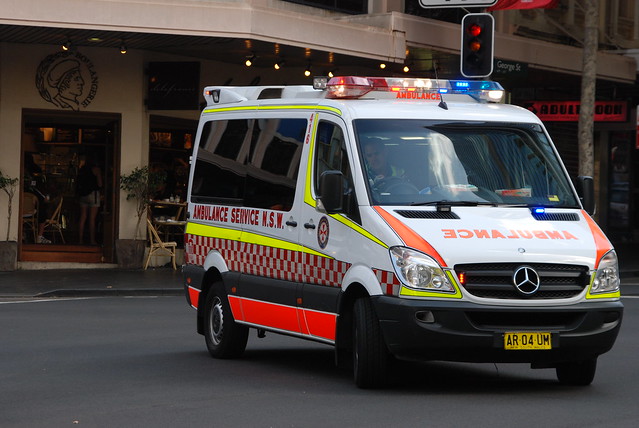
I’ve been taking advantage of my incarceration (just kidding) to catch up on some TV viewing.
That’s between trying to get some work done around the house, auditing ambulance calls, and running reports for my client agencies. At some point, I hope to actually do classes with those agencies, but it will likely be on line for a while.
I live near one of the urban hot spots for the virus, so our shut down will probably continue for another month or so.
Back to TV. I’ve also taken advantage of my Amazon Prime account to watch some TV shows that don’t appear on cable or the networks.
I stumbled across a TV show from Australia called “Ambulance Australia.” The first two seasons cover the New South Wales emergency ambulance service.
NSW Ambulance is a very large service, about 4,500 staff including paramedics, dispatchers, supervisors, and support staff. As a result they are busy.
Those who are interested can read about the service on the Internet, so I’ll just comment on the show.
It’s very well done from a production standpoint. Both dispatch (control) and field units are covered. As a result, we get a good view of the entire call from start to finish. Well, except the part in the hospital.
The content is good too, at least from what I can see. There is some editing done, but not nearly as much on the shows from New Orleans and Boston a few years ago. About the only thing I wonder about is the crew make up. I’m sure it’s a diverse system, but I wonder if there are really as many all female or female/male crews as are shown on the show. I wonder if management did a little “mix and match” for public relations purposes. Even at that, the crews are natural in their element and seem candid.
The calls are ambulance calls. There were some calls that were very familiar to me because I respond calls like that many times over my career. There weren’t any “Wow, that’s weird.” calls at all.
How they were treated was different in some cases, which was interesting. They seemed to spend more time on scene than is the norm in my experience. Part of that seems to be the configuration of their ambulances which don’t have as much working room as I was used to. I was fortunate not to ever have to work in a van ambulance, but even by those standards the layout of the NSW ambulances seemed cramped to me.
As a result, even trauma calls are mostly worked on scene before being moved to the ambulance. The system I worked in had a ten minute on scene limit for most trauma. If we were on scene for more than that amount of time we’d have to explain to someone what the hold up was.
Granted, there were calls where we had to stay on scene for much longer, but they were not the norm. Of course I worked in a city that was much smaller than the state of New South Wales, so we were in a trauma center in a much shorter time frame.
Some of the things that made me laugh because they were so much like what I experienced were the crews trying to get to call through traffic. They yelled at drivers who didn’t pull over much as I and people I worked with yelled at drivers who didn’t pull over.
They had to deal with annoying bystanders, much as we had to deal with annoying bystanders.
They had patients who lied, we had patients who lied. In one notable incident a crew on the way to a call witnessed a small pick up crash into a light pole right in front of them. If the ambulance was any closer, the truck might have hit them. As the truck rolled across a lawn and come to a stop a young man jumped out of the truck and started to run away.
When the medics caught up to him, they asked him if he was the driver and he told them that he was in the back seat when the accident happened. Since they had him on video, it was kind of hard to hold on to that lie and eventually he admitted to the police that he was the driver.
In his case, he refused care and was arrested for drunk driving. Which is different than my experience because a person as drunk as he was would need to go to the hospital to be cleared medically. Other than that, it was not much different than a good number of calls i went to over the years.
I remember one call where two cars collided in the middle of the street in the middle of the night. The driver of one car wasn’t injured. All six people in the other car claimed injury.
Funny thing was, at the time of the accident witnesses (It always amazed me how many people were out in the middle of the night) said that there were only three people in the car before the accident. By the time we got there, three more people had magically appeared.
When I started interviewing the “patients” all six claimed to be in the back seat of the car. My comment to the police was that clearly the accident was caused by no one being behind the wheel.
The show is fast paced and very entertaining. I like it because there is real drama, but I didn’t see any played up drama. The calls were typical of what I responded to over the years. Some of the technology is different, but mostly it’s the same. It struck me that if I were younger and so inclined, I could climb into one of those ambulances and start responding calls.
Enjoyable TV, well recommended.